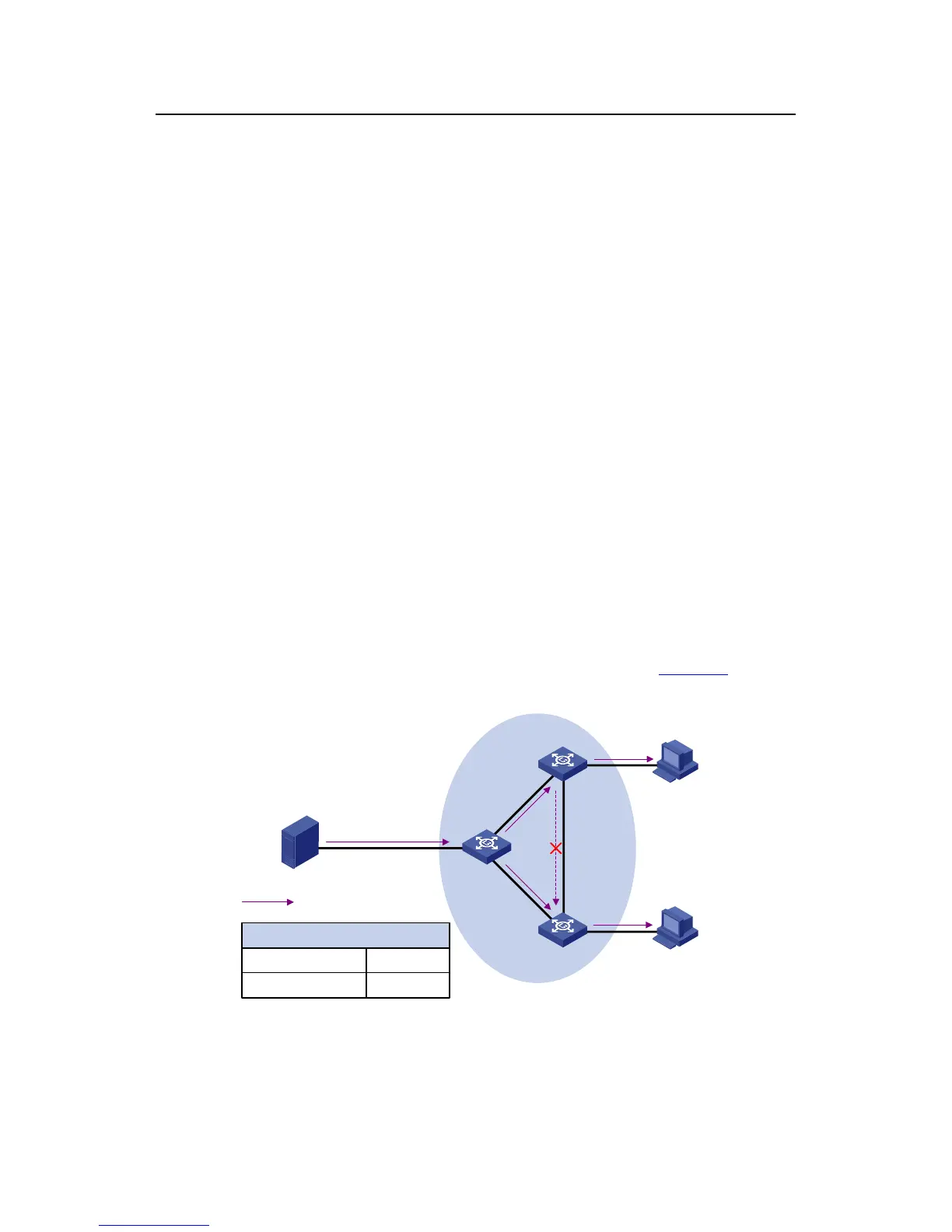Operation Manual – Multicast
H3C S3100 Series Ethernet Switches Chapter 1 Multicast Overview
1-13
3) If no corresponding (S, G) entry exists in the multicast forwarding table, the packet
is also subject to an RPF check. The router creates an (S, G) entry based on the
relevant routing information and using the RPF interface as the incoming interface,
and installs the entry into the multicast forwarding table.
z If the interface on which the packet actually arrived is the RPF interface, the RPF
check is successful and the router forwards the packet to all the outgoing
interfaces.
z If the interface on which the packet actually arrived is not the RPF interface, the
RPF check fails and the router discards the packet.
1.4.2 RPF Check
The basis for an RPF check is a unicast route. A unicast routing table contains the
shortest path to each destination subnet. A multicast routing protocol does not
independently maintain any type of unicast route; instead, it relies on the existing
unicast routing information in creating multicast routing entries.
When performing an RPF check, a router searches its unicast routing table. The
specific process is as follows: The router automatically chooses an optimal unicast
route by searching its unicast routing table, using the IP address of the “packet source”
as the destination address. The outgoing interface in the corresponding routing entry is
the RPF interface and the next hop is the RPF neighbor. The router considers the path
along which the packet from the RPF neighbor arrived on the RPF interface to be the
shortest path that leads back to the source.
Assume that unicast routes exist in the network, as shown in
Figure 1-7. Multicast
packets travel along the SPT from the multicast source to the receivers.
Source
192.168.0.1/24
Receiver
Receiver
Router A
Switch B
Switch C
Vlan-int2
Vlan-int1
Vlan-int1
Vlan-int2
Multicast packets
Destination/Mask
IP Routing Table on Switch C
192.168.0.0/24
Interface
Vlan-int2
Figure 1-7 RPF check process

